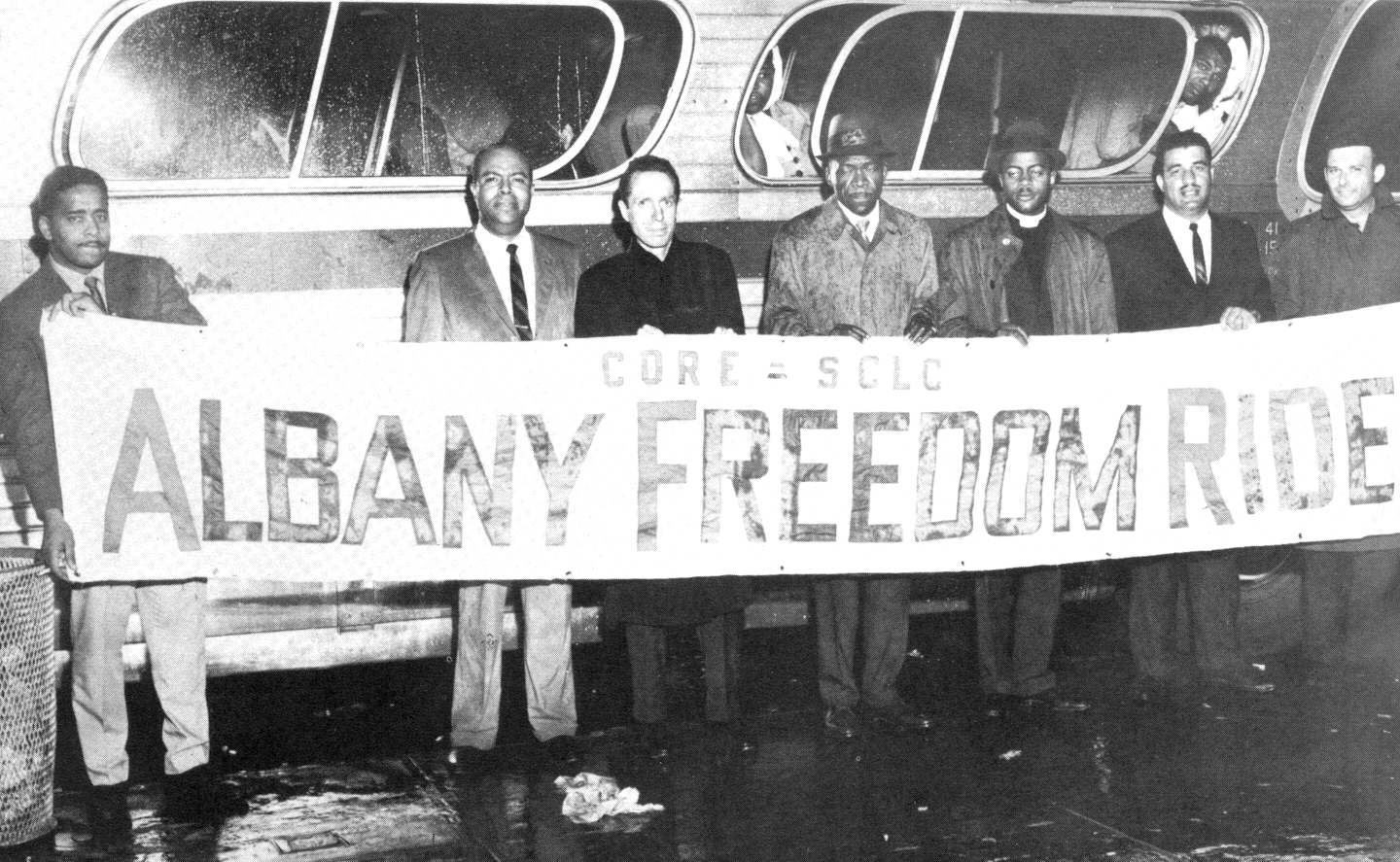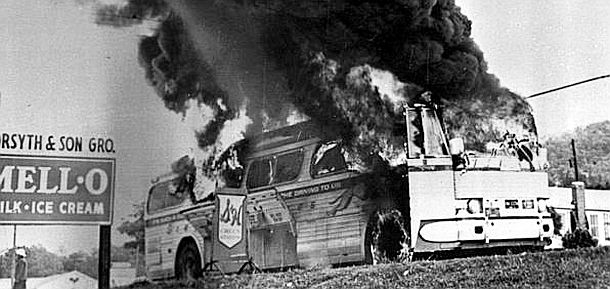The Freedom Rides movement was one of the prominent parts of the civil rights movement. The goal of the freedom riders was to challenge the Supreme Court's decision about cases Morgan v. Virginia and Boynton v. Virginia. The ruling of these cases was that segregated buses were unconstitutional. Although the ruling was in favor of the movement, the Southern States did not desegregate their buses.

The Freedom Riders were civil rights activists, who rode segregated buses deep into the south to peacefully protest against their decision about segregation of buses. This included both black and white passengers. The first freedom ride left Washington D.C on May 4th, 1961, with 13 passengers (7 black and 6 white) in two buses, Greyhound and Trailways. They arrived as scheduled in New Orleans in May 17.
 The riders organized themselves in such a way that it would provoke the onlookers and would get them arrested. One black rider always sat in the front seat, a seat that was usually reserved for white passengers, while the other would be scattered over the bus. One black rider would always sit in the back, so that if the riders were pulled over and arrested, he would be able to call the organization (CORE) and arrange for bail.
The riders organized themselves in such a way that it would provoke the onlookers and would get them arrested. One black rider always sat in the front seat, a seat that was usually reserved for white passengers, while the other would be scattered over the bus. One black rider would always sit in the back, so that if the riders were pulled over and arrested, he would be able to call the organization (CORE) and arrange for bail. But, not all the rides were as peaceful as they were meant to be. The freedom riders didn't meet much trouble in Virginia, but the riots and mobs in Winnsboro, Charlotte, Jackson, Birmingham and Anniston, were where the riders would meet violence and anger of the south.
The first of the buses would encounter their first problem at Anniston, Alabama. When the first bus (the Greyhound) reached Anniston on Mother's Day, May 14th, an angry mob of southerners attacked. The driver tried to leave the station, but the bus' tires were slashed. Later, the mob set fire to the bus several miles away from the station. Luckily, a distraction occurred, that caused the mob to retreat and allowed the riders to escape. An hour later, the second bus (the Trailways) reached Anniston. Here, 8 Klansmen boarded the bus, and beat the riders semi-conscious, leaving them at the back of the bus.

These were just a couple of the attacks on the freedom riders. Later the mob would attack several buses at Birmingham and Montgomery. Where the mob didn't attack, the riders were arrested by local law enforcement and kept in jail until they could be bailed out.
A very dangerous movement, this was crucial to the civil rights movement as the riders would gain moral support from those who could see how peaceful protesters were being treated with violent force.


This was a great post summarizing the main points about the Freedom Riders. It's so inspirational to see a group of people so persistently standing up for justice, despite all the opposition in the South. Also, the fact that they stayed non-violent and still were successful made such a huge impact on future protests around the world! If you're interested, I found a link documenting a timeline of major successful peaceful protests, check it out: http://mentalfloss.com/article/29040/13-peaceful-protests-and-whether-they-worked
ReplyDeleteI liked this post a lot because of how in depth you went with the topic. I didn't know that these bus rides were that planned out, as to the order of who sat where. The facts were also easier to understand because you explained the reasoning behind these seat orders or deliberate provocation. I think the Freedom Riders are one of the most inspirational people that we learn about in U.S history. This is a really cool personal story about James Zwerg, a white man who was also a Freedom Rider involved in the white mob attack in the Alabama bus station. http://www.cnn.com/2011/US/05/16/Zwerg.freedom.rides/
ReplyDelete